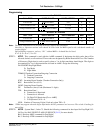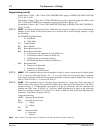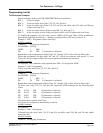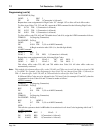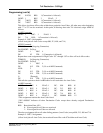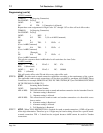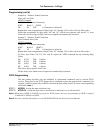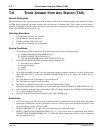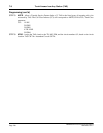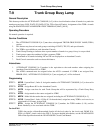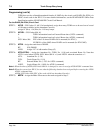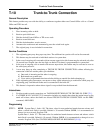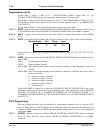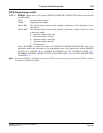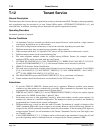
NEAX2400 IPX Feature Programming Manual
NDA-24297, Issue 1
Page 757
Trunk Answer from Any Station (TAS) T-8
Interactions (cont’d)
4. CALL TRANSFER-ALL CALLS [C-11]: A station answering a call via the TAS feature will have access
to the transfer feature.
5. CENTRALIZED ATTENDANT SERVICE (CAS) [C-20]: TAS may be installed at either the Main site
only or at both the Main and Satellite sites. Operations at either site are the same as TAS installed in a non-
CAS system. The Satellite system must have a means of placing the system into Night mode. This would
require an ATI circuit card connected to a Night switch.
6. CALL FORWARDING - ALL CALLS [C-5] / BUSY LINE [C-2]: When a Direct Inward Dialing (DID)
call terminates to a station setting CALL FORWARDING - ALL CALLS [C-5] or BUSY LINE [C-2] to
the Attendant, the call can be answered using the TAS feature.
7. CLASS OF SERVICE-INDIVIDUAL [C-15]: Stations must be allowed access to TAS via Service Feature
Class. The station Route Restriction Class will either allow or deny connection to incoming C.O. calls via
TAS.
8. DAY/NIGHT CLASS OF SERVICE [D-15]: A CLASS OF SERVICE-INDIVIDUAL [C-15] change that
occurs when the system goes into Night mode may allow a station to answer incoming trunk calls that are
restricted to that station in Day mode.
9. HOUSE PHONE [H-2], INDIVIDUAL ATTENDANT ACCESS [I-6], STATION-TO-STATION
CALLING-OPERATOR ASSISTANCE [S-12], and ATTENDANT NIGHT TRANSFER [A-19]: These
calls will not be directed to TAS when the system is in Night mode.
10. CONSULTATION HOLD [C-17]: TAS cannot be accessed via CONSULTATION HOLD.
11. TRUNK ANSWER ANY STATION will not default if other provisions are not made to answer incoming
calls when the system is in Night mode. See the ACFR command.
12. The type of Attendant Console system used determines how the system will enter into the Night mode.
See System Data 2, Index 2, Bits 2 & 3.
13. A user receives a reorder tone after dialing the TAS access code if one or more of the following applies:
a.) Station line is inward restricted.
b.) Station line is fully restricted.
c.) Station is restricted from the TAS access code.
d.) Station has a party on Hold.
e.) Another station has answered the TAS call and no other calls are in the TAS queue.
14. Incoming calls remain in the TAS queue until answered from a station or until abandoned by the far end.
Programming
STEP 1: ASYD - System Data 1, Index 68, Bit 2. Type of TAS ringing; 0/1: Interrupted/Continuous.
SYS1, Index 77, Bit 0. Is Day/Night change accomplished by removing Attendant Console handset? 0/
1: No/Yes.
System Data 1, Index 229, Bit 3. Day/night change system message printout. 0/1: No/Yes.
STEP 2: ANPD - Reserve a number level for feature access. Assign Connection Indexes, CI = N, H, B; Normal
(N), Hooking (H), and Busy (B) (applicable to any feature assigned to this level). Assign NND in
accordance with a predetermined numbering plan.
STEP 3: ASPA - Assign an access code to TRUNK ANSWER FROM ANY STATION, SRV = SSC (Service
Code), SID = 16 TAS. Connection Index of CI = N, Normal (N).
STEP 4: ASFC - Assign a Service Feature Class that allows SFI = 13 for the station to receive TRUNK
ANSWER FROM ANY STATION.



